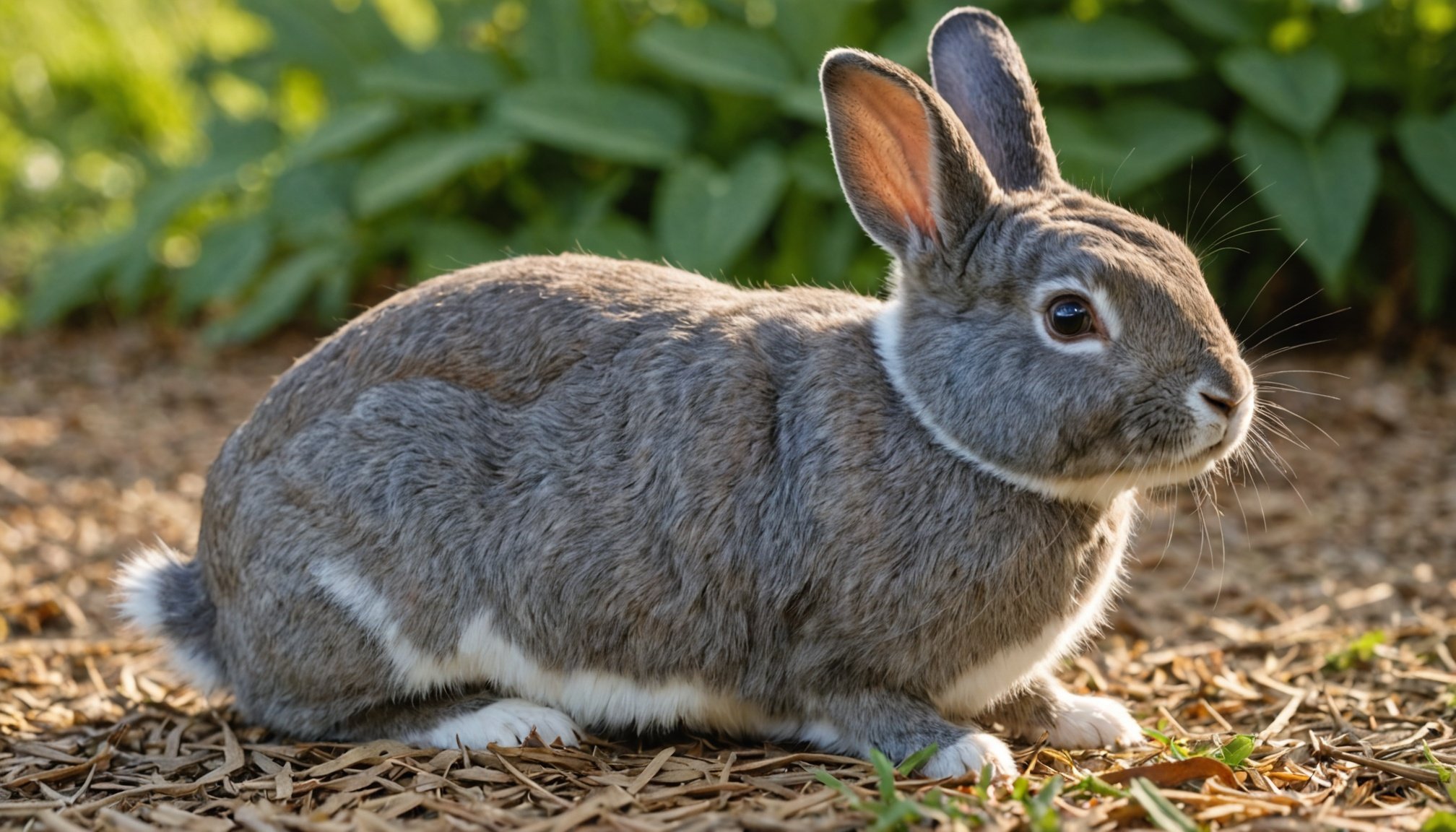Understanding Solo Rabbit Happiness
Solo rabbit happiness plays a crucial role in ensuring the overall rabbit well-being. Understanding a rabbit’s natural behaviors is the first step towards enriching their environment and lifestyle. Rabbits are inherently social animals, who thrive on interaction and companionship. When kept alone, they rely heavily on human attention and interaction to maintain happiness.
Loneliness can significantly impact a rabbit’s health, leading to issues like depression or lethargy. Therefore, addressing this requires more than just a warm shelter and food. Rabbit well-being involves creating an environment that caters to their need for companionship and mental stimulation.
In parallel : Nourishing Your Hyperthyroid Cat: Key Dietary Tips for Optimal Health
There are several key well-being factors to consider for solo rabbits:
- Providing various forms of mental and physical stimulation, such as toys and enrichment activities.
- Ensuring a consistent interaction routine, which will strengthen the bond between you and your pet.
- Observing their behavior to pick up on signs of stress, illness, or boredom.
Incorporating these care tips helps foster a satisfying and stimulating environment. By doing so, a solo rabbit can enjoy a life filled with happiness, actively displaying their natural behaviors which are indicative of their well-being.
Also to read : Compassionate Techniques for Rehabilitating Abused Dogs: A Trust-Building Socialization Guide
Creating an Enriching Environment
Crafting a thoughtfully designed habitat is essential to promote rabbit well-being, especially for solo rabbits. A well-considered environment not only supports their natural behaviors but also acts as a form of mental stimulation.
Essential Elements of a Rabbit’s Habitat
Environmental enrichment begins with the basics of safe spaces constructed from rabbit-friendly materials. Ensure that the habitat includes areas for rest, exploration, and play. Providing multiple levels and hiding spots mimics rabbits’ natural surroundings, fostering an enriching environment.
Safe and Stimulating Materials for Rabbit Spaces
Select materials that are both safe and stimulating. Soft bedding, chewable toys, and tunnels create an interactive space. These elements are crucial in reducing loneliness and encouraging active engagement. Opt for natural materials, like untreated wood, to ensure that the habitat is not only stimulating but also safe.
Tips for Designing Areas That Encourage Natural Behaviors
When designing your rabbit’s space, consider their innate instincts. Incorporate features such as digging corners or foraging zones. These can be achieved with materials like shredded paper or specific digging boxes. By allowing rabbits to express their natural behaviors, you substantially boost their happiness while meeting their fundamental needs.
By focusing on these pet care tips, you foster an invigorating and secure environment, contributing positively to a solo rabbit’s overall happiness.
Interactive Toys and Activities
Enrichment activities are fundamental to a rabbit’s mental stimulation. They keep solo rabbits actively engaged, reducing potential loneliness-induced stress. A diverse array of rabbit toys can cater to their instinctual behaviors like chewing and digging.
Types of Interactive Toys
Select toys crafted to elicit curiosity and intelligence. Puzzle toys are excellent for challenging their problem-solving skills, while play tunnels promote physical exertion. Chewable items, made from safe materials, satisfy their gnawing instinct.
DIY Toy Ideas
Creating DIY toys is a cost-effective way to enrich your rabbit’s environment. Utilize household items like toilet paper rolls or cardboard boxes to fashion intriguing play objects. Fill them with treats to entice exploration and active play.
Structured Playtime Activities
Implement a routine of varied playtime activities, as it effectively supports rabbits’ happiness. Alternate between sensory-based toys, such as those with different textures, and ones that promote movement. This variety ensures sustained mental stimulation.
Regularly update the selection to maintain their interest. A balanced mix of ready-made and homemade toys can keep your rabbit’s playtime enriching and engaging. These enrichment activities form an integral part of a fulfilling solo rabbit lifestyle.
Socialization Techniques for Solo Rabbits
Understand that rabbit socialization is pivotal due to their inherently social nature. Being animals that naturally thrive on companionship, fostering interaction is crucial for solo rabbits. Without it, they may experience loneliness, which can negatively impact their health and happiness. Let’s explore techniques for enhancing your bond and introducing safe companionship.
Begin by establishing routines of daily interaction. Simple activities like gentle petting or talking to them in a calm voice strengthen your bonding. This consistent engagement reassures and comforts your rabbit, nurturing their trust over time.
For bonding with pets, use interactive play to simulate natural rabbit behaviors. Create explorative games within their environment, using toys that challenge their senses. It’s important for activities to align with their instincts, such as digging or foraging.
Introducing rabbits to safe partners, such as other pets, involves careful planning. Allow both animals to observe and sniff each other at a distance initially. Gradually, with positive reinforcement, involve them in shared activities. Always monitor interactions closely to ensure safety and comfort. By focusing on companionship through tailored socialization, solo rabbits can flourish emotionally, significantly enhancing their overall well-being.
Nutritional Recommendations for Well-being
Ensuring a rabbit diet is well-balanced is paramount for healthy feeding. Thus, understanding the essential nutritional components ensures rabbit well-being. A rabbit’s diet should predominantly consist of fresh hay, which provides essential fiber necessary for digestion. Fresh vegetables and leafy greens, such as kale and bok choy, are also vital, contributing vitamins beneficial for their energy levels.
Essential Nutritional Components
- Fiber: Hay is critical for maintaining digestive health and should be the main portion of their diet.
- Vitamins and Minerals: Vegetables supply necessary nutrients. Use dark leafy greens regularly.
- Water: Fresh water should be available at all times to prevent dehydration.
Healthy Treats and Their Impact
Treats, although gratifying, should be limited to maintain rabbit health. Moderation is key. Opt for natural, low-sugar snacks such as small fruit pieces. These enhance variety without compromising dietary recommendations.
Diet Planning for Energy and Longevity
Crafting a feeding schedule supports rabbit wellness. Align meal times with their active periods, typically dawn and dusk. A consistent routine prevents obesity and supports their energetic nature. Encouraging natural eating habits alongside these nutrition tips ensures a fulfilling and healthy lifestyle for your rabbit.
Establishing Healthy Routines
Consistency in daily care dramatically enhances rabbit wellness and ensures a harmonious lifestyle. Routines create a sense of security and predictability, promoting trust between you and your furry companion.
Daily care should encompass structured feeding times, interactive play sessions, and moments of affection. Align your routine with your rabbit’s natural patterns, particularly during their most active times: dawn and dusk. This synchronization caters to their instinctive needs and supports their well-being.
Routine Activities for Rabbit Wellness
-
Feeding Schedule: A consistent feeding routine helps regulate digestion and prevents obesity. Serve meals during peak activity periods to match their energetic levels.
-
Playtime and Interaction: Regular playtime enhances mental and physical health. Vary activities and toys to maintain engagement and stimulate mental states.
-
Health Monitoring: Routine check-ins allow for early detection of potential health issues. Observe changes in behavior, appetite, or physical appearance that may signal underlying health concerns.
By incorporating these structured practices into your daily regimen, you establish a nurturing environment that supports your solo rabbit’s happiness and longevity. Ultimately, this consistency fosters a balanced and thriving rabbit lifestyle, allowing for a rewarding companionship.

